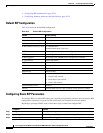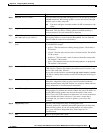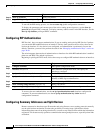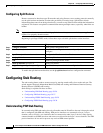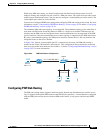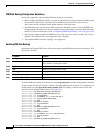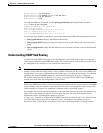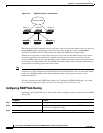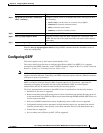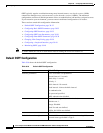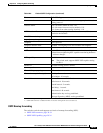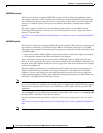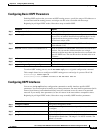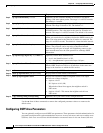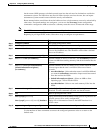
38-30
Cisco Catalyst Switch Module 3110 and 3012 for IBM BladeCenter Software Configuration Guide
OL-12189-01
Chapter 38 Configuring IP Unicast Routing
Configuring Stub Routing
Figure 38-5 EIGRP Stub Router Configuration
When configuring the distribution router to send only a default route to the remote router, you must use
the ip classless global configuration command on the remote router. By default, the ip classless
command is enabled in all Cisco IOS images that support the EIGRP stub routing feature.
Without the stub feature, even after the routes that are sent from the distribution router to the remote
router have been filtered or summarized, a problem might occur. If a route is lost in the corporate
network, EIGRP sends a query to the distribution router, which in turn sends a query to the remote router
even if routes are being summarized. The EIGRP stub routing feature allows a network administrator to
prevent queries from being sent to the remote router.
Note You should configure EIGRP stub routing only on stub routers. A stub router is a router connected to the
network core or the distribution layer through which core traffic should not flow. A stub router should
not have any EIGRP neighbors other than distribution routers. Ignoring this restriction causes
undesirable behavior.
For more information about EIGRP stub routing, see “Configuring EIGRP Stub Routing” part of the
Cisco IOS IP Configuration Guide, Volume 2 of 3: Routing Protocols, Release 12.2.
Configuring EIGRP Stub Routing
Beginning in privileged EXEC mode, follow these steps to configure a remote or spoke router for EIGRP
stub routing:
Host A Host B
Switch B
Switch A
Routed to WAN
Switch C
Host C
145776
Command Purpose
Step 1
configure terminal Enter global configuration mode.
Step 2
router eigrp 1 Configure a remote or distribution router to run an EIGRP process, and
enter router configuration mode.
Step 3
network network-number Associate networks with an EIGRP routing process.



